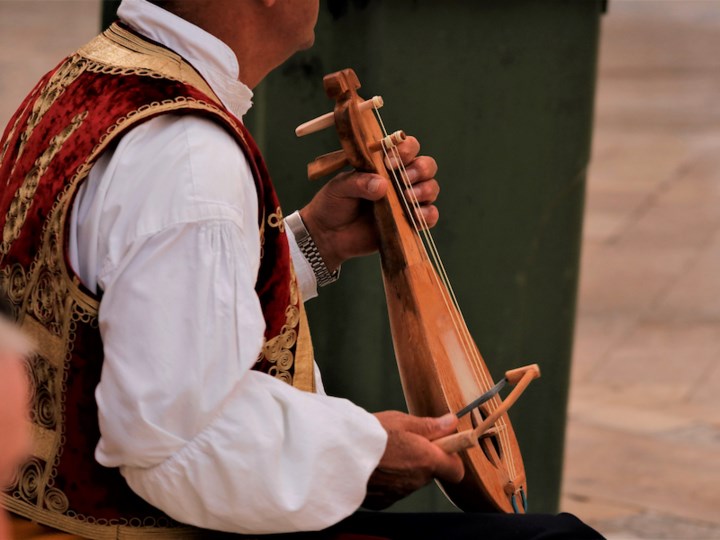You can hear him in the distance. The wind carries the
shepherd's call across the slopes of the karstic Dinaric Alps:
"Ooooooj!" A shepherd from the neighboring mountain responds with the same sound, warning him of the danger lurking in the hideout. A wolf approaches the flock quietly and carefully, waiting for the right moment to attack.
This short anecdote is only one of many that relate to the
origin of the unusual ojkanje singing, which is closely connected with the
traditions and customs of the inhabitants of the
Croatian hinterland. In the region of
Lika, through Ravni Kotari, Bukovica, Dalmatian Zagora to the region of Konavle, you can hear the usually
polyphonic throat singing, which sounds archaic and artistic at the same time. There are many popular names for polyphonic ojkanje singing. Between the
rivers Cetina and Krka it is called
ojkalica and in the regions of
Ravni Kotari and Bukovica it is sometimes referred to as
orzenje. In some places, the singing performed by men is called
treskavica and performed by women
vojkavica. However, it is also known as
"wolf singing", which can be interpreted as an indication of its origin, but also as description of its characteristic.
This throat singing, in which the singers use a certain technique to make the voice shake on the syllables -oj or -hoj, is characterized by an unusual sound, which is certainly reminiscent of the
howling of wolves. The distinctive voice shaking is called
skalina. The solo singing in the region of Lika is called
"travel singing" or "solitary singing". However, more widespread and popular is the ojkalica - the polyphonic singing in duets or groups. The first voice, which stands out for its power and intensity, is accompanied by the second voice, which produces a longer accompaniment tone at the moment of the long and sharp shaking sound. A question-and-answer situation arises, like in the anecdote. The remaining voices join in when the second voice gives its signal.

The chant lasts as long as the first voice holds its breath. The couplets, which, like epics, consist of decasyllabic verses, address a multitude of
different aspects of life. From birth, marriage to death - songs once accompanied important life events. Besides, the archaic chants also reflect serious, trivial and sometimes even humorous topics. These important functions of communication and oral tradition date back to the pre-Illyrian period. Today, the chants still show
cultural features of singing in the territories of ancient Dalmatia. It is assumed that the Slavs took it over and preserved it when they moved into these areas. This ancient and primitive singing is one of the oldest forms of polyphony and was once passed orally
from generation to generation.
Today, the bearers of this tradition are
mostly older singers, who have a
prominent status within the communities. Unfortunately, there are fewer and fewer young people interested in learning this Croatian folk singing. Thus, many verses, melodies and specific styles are getting lost.
In 2010, ojkanje singing was inscribed on the
UNESCO List of Intangible Cultural Heritage in Need of Urgent Safeguarding. Numerous cultural associations and folklore groups contribute to the preservation of the ancient tradition through their performances and the training of young singers. As a guest in one of our attractive
villas in Dalmatia, you can make your own contribution. Visit regional cultural events, experience hospitality and
enjoy the expressive archaic sounds of times long past.
Maja Kovacevic
23.2.2022

 MY ISTRIA GUIDE
MY ISTRIA GUIDE

